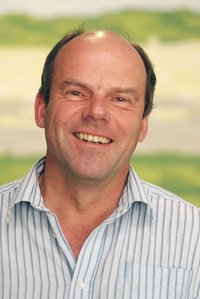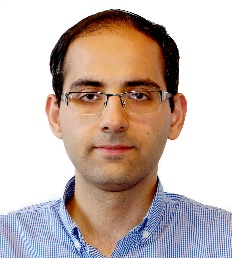| Prof.dipl.-Ing. Andreas Ettemeyer NTB Interstate University of Applied Sciences of Technology Buchs Institute for Production Metrology, Materials and Optics "Holography and Speckle – Potential for the Future" Holography techniques and speckle interferometry look very similar techniques however at the same time show some fundamental differences. A systematic comparison will show chances and limitations of both techniques. Actual applications will be presented and some aspects for future potential will be evaluated Bibliography Andreas Ettemeyer studied Mechanical Engineering in Munich and Aachen and graduated on holographic interferometry in Stuttgart. In 1989 he founded and managed a company for laser speckle interferometry systems. In 2007 he received a call as professor for Technical Optics at NTB Interstate University of Applied Sciences in Buchs, Switzerland, where he is head of the Institute of Production Metrology, Materials and Optics. During his whole career Andreas Ettemeyer has focused his research and development work on holography and speckle techniques in 3D measurement applications. dr.ir. Amir A. Zadpoor Delft University of Technology Associate Professor and the Chair of Biomaterials and Tissue Biomechanics "Applications of photomechanics in tissue biomechanics" Advanced imaging techniques are often combined with computational and analytical models to characterize the biomechanical behavior of biological tissue and biomaterials. The biological tissues are characterized at different spatial and time scales and could vary from skeletal tissues such as bone and cartilage to soft tissues such as liver and brain. This talk will review the state of the art in application of photomechanics to characterization of the biomechanical behavior of various types of biological tissue and biomaterials with an emphasis on skeletal tissues. The multi-physics nature of the problem, i.e. coupling of the mechanical behavior with chemical and electrical behaviors, will be also addressed. The included imaging techniques vary from full field strain measurement techniques such as digital image correlation and digital volume correlation that are often used for characterization of the mechanical behavior of biomedical materials to multi-physics techniques based on (nano/micro-) computed tomography that are used for simultaneous characterization of the chemical, electrical, and mechanical behavior of biological tissues. Bibliography Dr. Zadpoor obtained his PhD (cum laude) from the same university after completing his MSc and BSc studies respectively in Biomedical and Mechanical Engineering elsewhere. His research interests are in the area of skeletal tissue biomechanics, biomaterials, and biofabrication (3D printing and additive manufacturing of biomaterials and tissues). He has authored 80 articles for archival journals (H-index:20, WoS), is on the editorial board boards of multiple international journals, and has served as reviewer for more than 50 journals. Michael A. Sutton, PhD Carolina Distinguished Professor and Director "Applications of Digital Image Correlation Methods in Experimental Mechanics: Recent Experimental Surface Measurements at the Nano- and Macro-Scales and Within the Volume for Heterogeneous Material Systems" Digital image correlation (DIC) methods were conceptualized in the 1950s within the photogrammetry community, rigorously defined as a two-dimensional full-field method with emphasis on accuracy in 1980s, modified using stereovision concepts for general surface measurements in early 1990s and extended to whole-volume measurements circa 2000. All of these methods came of age in the new millennium as computer technology advanced and processing speed increased by more than 106; subset matching speeds for 21x21 subsets exceed 10,000/sec in some implementations . This presentation will briefly summarize the history of DIC methods before presenting a series of experimental studies. In the first study, recent developments at the micro-scale and nano-scale are presented, with special emphasis on DIC measurements using a scanning electron microscope for imaging extremely small regions on heterogeneous specimens subjected to elevated temperatures. In the second study, recent volumetric imaging strain measurements from a specially designed and manufactured nylon fiber-epoxy composite specimen are presented. Finally, a recent large-scale study on pre-stressed concrete beams is presented to demonstrate the broad applicability and potential measurement limitations of the method for structural studies. Bibliography Michael A. Sutton received his Ph.D. in Theoretical and Applied Mechanics from the University of Illinois in Champaign-Urbana in 1981. He has spent his professional career as an educator and scientific researcher in the Department of Mechanical Engineering at the University of South Carolina. Prof. Sutton was one of the pioneering developers of the methods known as Digital Image Correlation (DIC). DIC methods have provided unprecedented measurement capabilities in all fields of solid mechanics. He is a co-founder of the corporation Correlated Solutions, Inc. that develops, distributes and supports the technology worldwide that was developed by Prof. Sutton and his colleagues. He is the author of over 200 archival papers in several areas, including vision-based measurements in mechanics, theoretical and experimental studies in mixed mode fracture of ductile materials, blast loading of structures and materials, analytical studies in pressure vessels, delamination studies in biological soft tissues and recently in the macro-scale characterization of composite materials using imaging systems and simulations. Prof. Sutton also co-authored the only book on Digital Image Correlation methods in 2009. Prof. Sutton has received numerous awards for his contributions including designation as the Commencement Speaker as a Distinguished Alumni by Southern Illinois University in Carbondale, IL in 1990; selection as a Fellow of both the Society for Experimental Mechanics (SEM, (2000) and the American Society of Mechanical Engineering (ASME, 2004); elected as President of SEM in 2001-2002, awarded an Doctoris Honoris Causa from Ecole’ Polytechnic in Cachan-Paris, France in 2011 and awarded the Murray Medal and Lecture from the Society for Experimental Mechanics in 2013 for his lifetime contributions to the community of scholars. Prof. Sutton’s current interests are in applications of digital image correlation methods; synthesis of image correlation and analytical methods for both R&D and design; extending DIC methods to the nano-scale; basic studies in composite materials. |
   |
||||||||||||||||||||||||||||||||||||||
KEYNOTE SPEAKERS